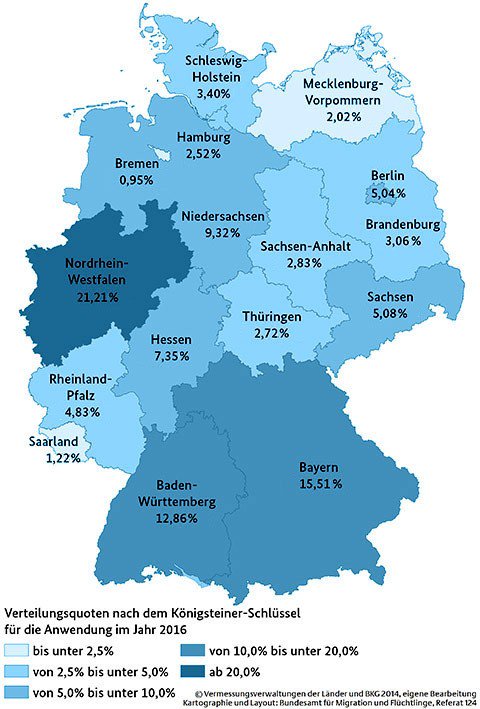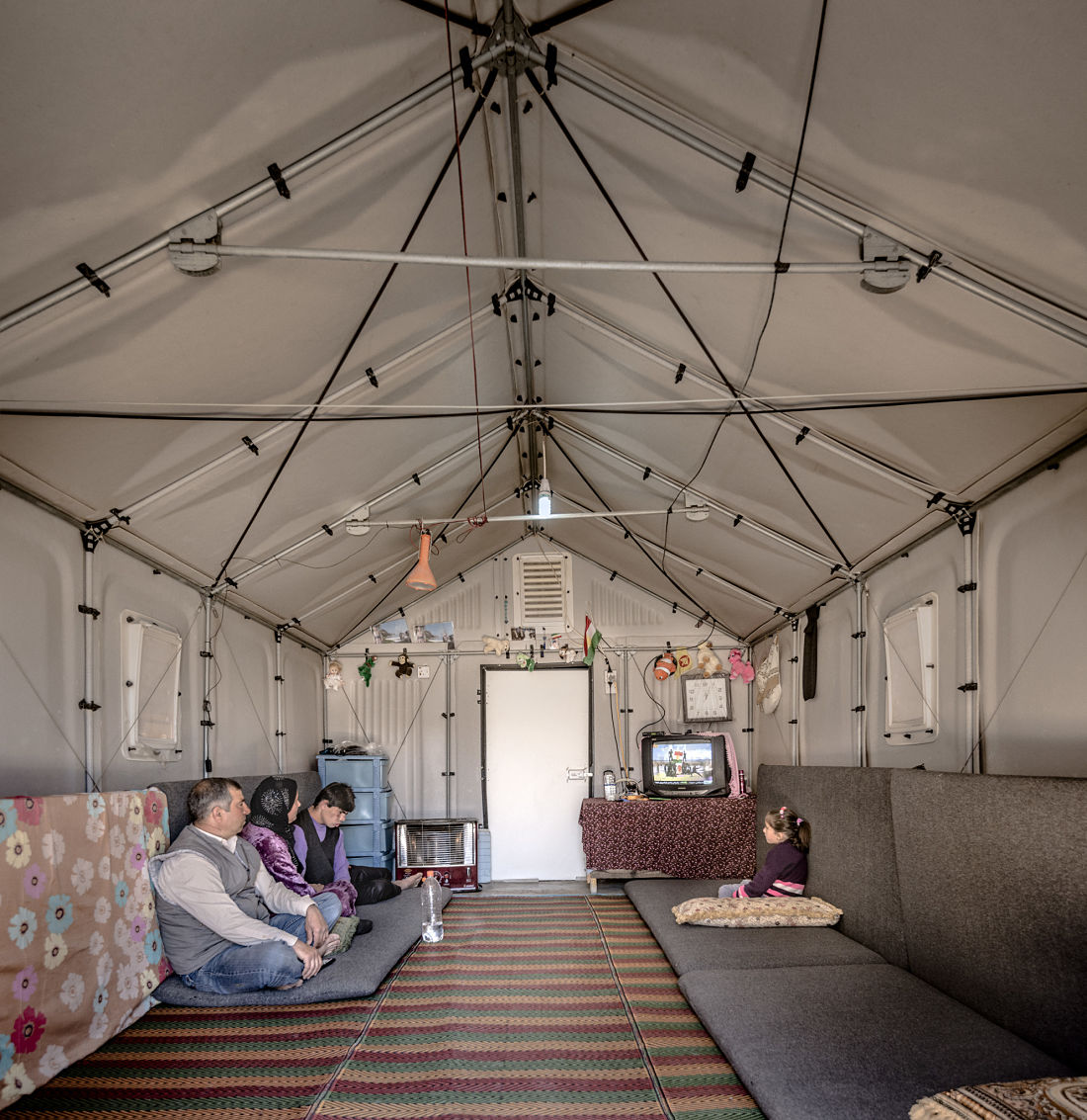In recent months, numerous images of overcrowded container villages, gymnasiums, tent cities or barracks converted to accommodate refugees have gone through the media. They make visible the discrepancy between the much-vaunted welcome culture and the strong commitment of civil society and the actual implementation of refugee policy. Not only the spatial situation, but also the living conditions in many mass accommodations are highly questionable: Refugees have hardly any privacy within the accommodation while at the same time being isolated from the outside world, lack of self-determination, ban on work and inactivity, lack of access to social infrastructure, hardly any contact with the local population and to few counseling and support services. Although adequate accommodation is only part of the overall overall strategy, it is of crucial importance for the successful integration of newcomers. Because in order to find your way in a new country with unfamiliar social structures and conventions, you first need to feel safe and comfortable in your own four walls.
the essentials in brief
- The residential biography of asylum seekers includes several stations: initial reception facilities of the federal government, collective or communal accommodation of the federal states and finally their own apartment.
- The argument that as many places as possible must be created in the shortest possible time must not be misused to neglect the quality of the accommodation facilities.
- The long-term integration into the regular housing market is one of the biggest challenges when accommodating refugees.
From initial reception to community accommodation for refugees
Since refugees are objects of administration, so to speak, they have no say in the choice of residence and the form of accommodation. This task is carried out by the federal government, the interior and social affairs ministries of the federal states and the local authorities.
§ 44 para. 1 AsylVfG
According to § 44 para. 1 AsylVfG, the federal states are obliged “to create and maintain the necessary reception facilities for the accommodation of asylum seekers and to provide the number of accommodation places necessary for the monthly access of asylum seekers to the reception facilities in accordance with their reception quota.”
The Asylum Procedure Act (AsylVfG) regulates the accommodation of asylum seekers in a specific initial reception facility at federal level. The size, nature or equipment of the initial reception center are not specified in the AsylVfG, but stricter requirements apply, such as full catering without the possibility to cook for yourself, entrance controls and a restrictive limitation of the spatial area. The “Königstein key” determines the acceptance of refugees in the federal states according to their tax income and population. Allocation to an initial reception center depends on two factors: on the one hand on the current capacities, on the other hand on the home countries processed in the branch office of the Federal Office, because not every branch office works on every country of origin.
The Königstein Key
The Königstein key was originally developed in 1949 to calculate the distribution of nationally important research institutions across the individual federal states. Today, numerous other treaties and agreements fall back on it, including the question of the distribution of asylum seekers. The share that a country has to bear according to the Königstein key is based on two-thirds on tax revenue and one-third on population.
Asylum seekers do not have a say in cross-border redistribution. The only criterion that must be maintained is the unity of the nuclear family (Section 46 (3) sentence 2 AsylVfG). The refugees stay in the initial reception centers for between six weeks and a maximum of three months (Section 47 (1) AsylVfG). They are then distributed to local authorities in the territorial states, and directly to communal accommodation or apartments in the city states. According to the Asylum Procedure Act, after they have been distributed to the local authorities, they should “usually be accommodated in shared accommodation” (Section 53, Paragraph 1, Clause 1 of the Asylum Procedure Act). From this, some federal states incorrectly derive the obligation to accommodate refugees in communal accommodation.
processing of applications
While almost all applications are processed in Berlin, in Augsburg, for example, only applications from asylum seekers from Afghanistan, Eritrea, Pakistan and Syria are processed. However, an attempt is made to cover all countries of origin within one federal state. Applications from Syrian asylum seekers, for example, are processed in all four branch offices in Lower Saxony, but applications from Turkish asylum seekers only in Friedland.
According to the AsylVfG, however, there is only an obligation to accept asylum seekers, which would not rule out other accommodation, for example in apartments.

Source: Federal Office for Migration and Refugees
Alternatives to mass accommodation – integration instead of isolation
Requirements for renting
The maximum amount of the rent is determined on the one hand by the number of people per household and the size of the house in which the apartment is located, and on the other hand by the type of heating and hot water supply. In well-founded exceptions, such as chronic illness, HIV infection, pregnancy, old age or disability and for single parents, the rent may also exceed the fixed upper limits.
When accommodating refugees in mass accommodation, the argument that there is no alternative is often put forward. Politicians justify the sometimes inhuman living situation in overcrowded sports halls or container settlements by saying that as many accommodation places as possible must be created in the shortest possible time. The question of quantity pushes the question of quality into the background, which is why about half of the federal states have not even defined minimum standards for communal accommodation. However, not all municipalities see accommodation in mass accommodation as the only option; some have been pushing for the distribution of refugees in apartments for some time. In addition to the fact that there are no self-contained housing units in most collective accommodation centers and therefore hardly any privacy, the main advantages here are the contact with the local population, which significantly increases the integration potential and strengthens the independence and personal responsibility of the refugees. However, the possibilities for this are strongly dependent on the number of refugees to be accommodated and the housing market situation in the municipality. The vacancy rate, the proportion of municipal housing stock and the availability of buildings and developable land play a key role here. However, accommodating refugees in apartments is difficult, especially in large cities, since the housing market situation here is usually already very adjusted. On the other hand, the number of refugees is usually particularly high in the urban centers due to the hope of job opportunities, social infrastructure and connection to existing ethnic support networks. However, it is positive that there are often other accommodation options in urban areas, for example in under-occupied student or senior residences, in empty hotel rooms or in specially designed projects. These usually combine diverse forms of housing for different groups and often also workplaces with spaces for encounters and community under one roof.
After temporary housing comes permanent housing
If you are initially accommodated in shared accommodation, integration into the regular housing market usually takes place after several months. Before you can start looking for an apartment, you must first apply to the relevant social welfare office to have the rental costs covered. In order for the social welfare office to pay the rent for the apartment, however, certain requirements must be met. The deposit is also taken over in the form of a loan by the social welfare office. In addition, it is possible to apply to the social welfare office for initial equipment, as many refugees cannot afford to buy furniture. Despite this wide range of assistance, it is not easy for many refugees – as well as for many Germans – to find a suitable apartment due to the tight housing market situation in many cities. However, as there is no way for the majority of refugees to return to their home country and their old lives, long-term integration into the regular housing market is unavoidable in most cases. In recent months, a number of platforms have been set up to help refugees find accommodation, such as Flüchtlinge-willkommen.de . The Evangelical Youth and Welfare Organization also offers counseling and mediation services.
Other parts of this series
- Part I – How refugees (have to) live – the way from the initial reception center to your own apartment



